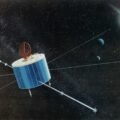As John Lennon mused in 1971, “Imagine all the people living life in peace.”
Imagination is required because wars are an integral part of our history. For millions of years, survival of the fittest favored those who were better at fighting for limited resources in the zero-sum games that characterize natural environments.
But modern science and technology brought us the opportunity for an infinite-sum future in which our unlimited prosperity benefits from cooperation and sharing of knowledge. The more we learn scientifically, the better the value of what we develop technologically and the higher the quality of life for us all. The past century of science and technology opens our imagination to a new reality where nobody loses, and everyone wins. Unfortunately, our biological brains are still hardwired to our past struggles for finite resources and are slow to open up to the new opportunity of unlimited mutual growth.
But this could change by technology overtaking biology. Within another century, national security decisions on war and peace might be vetted by artificial intelligence (AI) algorithms. AI holds the potential of sidelining the damage from miscalculated confrontational choices in world politics in the same way that a self-driving car will never take it personally if another car overtakes it in its lane.
At that futuristic oasis, the financial surplus of avoiding wars will raise the question of what to do with humanity’s ever-increasing wealth. An inspiring choice would be to venture into interstellar space. This mission targets the ultimate frontier where new physical resources and unimagined intellectual surprises await us.
In addition to making humans a multi-planetary species, interstellar travel would allow us to find a companion civilization in a multi-star family of similar species. Since most stars formed billions of years before the Sun, visiting interstellar space would be like stepping out to our cosmic street where others exist. Of course, singles can wait at home for someone to come along and knock on their door, but dating opportunities favor those who explore. If we find a partner, Fermi’s paradox of “where is everybody?” would appear like the complaint of a lazy single who expects potential dates to visit or call on the phone without investing any effort to go out to dating sites and search for them.
How difficult would it be to engage in the search? Let’s check some numbers. World peace will free the annual military budget worldwide, which totals about two trillion dollars. If humanity decided to invest these funds in space exploration, then it could launch a kilogram-mass nanoprobe to two hundred million stars every year, assuming the typical cost of ten thousand dollars per nanoprobe. This will allow sending a nanoprobe to every star in the Milky Way galaxy within a century or just a few decades, given the savings associated with economies of scale.
Let me pause and summarize: if humanity was as peaceful as Lennon imagined, then it could have sent a probe to every star in the Milky Way within a few decades. Realizing this potential trade and reading the daily news about the war in Ukraine makes one wonder whether we are truly intelligent species. But let us continue with our thought experiment and hope that it may inspire policymakers to shape a more inspiring future for humanity.
What about the needed fuel supply? As I learned from my colleague, Doug Finkbeiner, the Raptor rocket engine of SpaceX uses liquid methane and oxygen as fuel. Natural sources of methane on Earth produce more than a hundred million tons of methane per year. Trapping merely a few percent of this natural methane production and using it as fuel, will enable the launch of 200 million nanoprobes per year. The fuel cost is negligible compared to the production cost of the payload and its sensors.
If the probes are launched to interstellar space at a speed of a hundred kilometers per second, they would reach the nearest star, Proxima Centauri, in about ten millennia and traverse the Milky Way galaxy in a hundred million years.
Humanity will evolve considerably during this travel time. Future propulsion technologies would enable faster propulsion so that our future probes would overtake our present-day probes. Traversing interstellar distances at faster speeds would allow us to absorb the lessons learned from interstellar travel before Earth becomes inhabitable due to an existential catastrophe. At the limit, reaching the speed of light with powerful lasers pushing on lightweight light sails, as envisioned in the Breakthrough Starshot Initiative, would reduce the travel time by several orders of magnitude.
As Stephen Hawking noted in the speech he gave at my home after the public announcement of Starshot: “Until now, we were only able to observe stars from a distance. Now, for the first time, we can reach them.” Once we do, we will complete John Lennon’s dream by giving a new context to his concluding words: “And the world will live as one.” Except that the `world’ would mean `the family of civilizations within the Milky Way galaxy’ and not just humans on Earth.
And if we can imagine, someone else may have imagined the same near an older star a billion years ago. It would therefore be prudent to search for evidence of interstellar visitors. The Galileo Project just constructed a new observatory at Harvard University that monitors the entire sky for extraterrestrial technological objects. The Galileo research team already wrote seven papers that describe the infrared, optical, radio, and audio sensors used, to be published in the Journal of Astronomical Instrumentation within a few months. The current plan is to make a few copies of the first observatory system in the coming months and to publish preliminary data by the summer of 2023. Additional funding will enable the Galileo Project to scale up its operations.
Interstellar travel favors the scientifically inclined, exploring civilizations. The less sophisticated, “zero-sum-game civilizations” may be doomed to fight over territories on their home planet until they kill each other, or a giant asteroid hits them, or their star evolves to burn up the surface on which they maintain their wars.
Imagine us being different.
Avi Loeb is the head of the Galileo Project, founding director of Harvard University’s – Black Hole Initiative, director of the Institute for Theory and Computation at the Harvard-Smithsonian Center for Astrophysics, and the former chair of the astronomy department at Harvard University (2011-2020). He chairs the advisory board for the Breakthrough Starshot project, and is a former member of the President’s Council of Advisors onScience and Technology and a former chair of the Board on Physics and Astronomy of the National Academies. He is the bestselling author of “Extraterrestrial: The First Sign of Intelligent Life Beyond Earth” and a co-author of the textbook “Life in the Cosmos”, both published in 2021. His new book, titled “Interstellar”, is scheduled for publication in August 2023.

